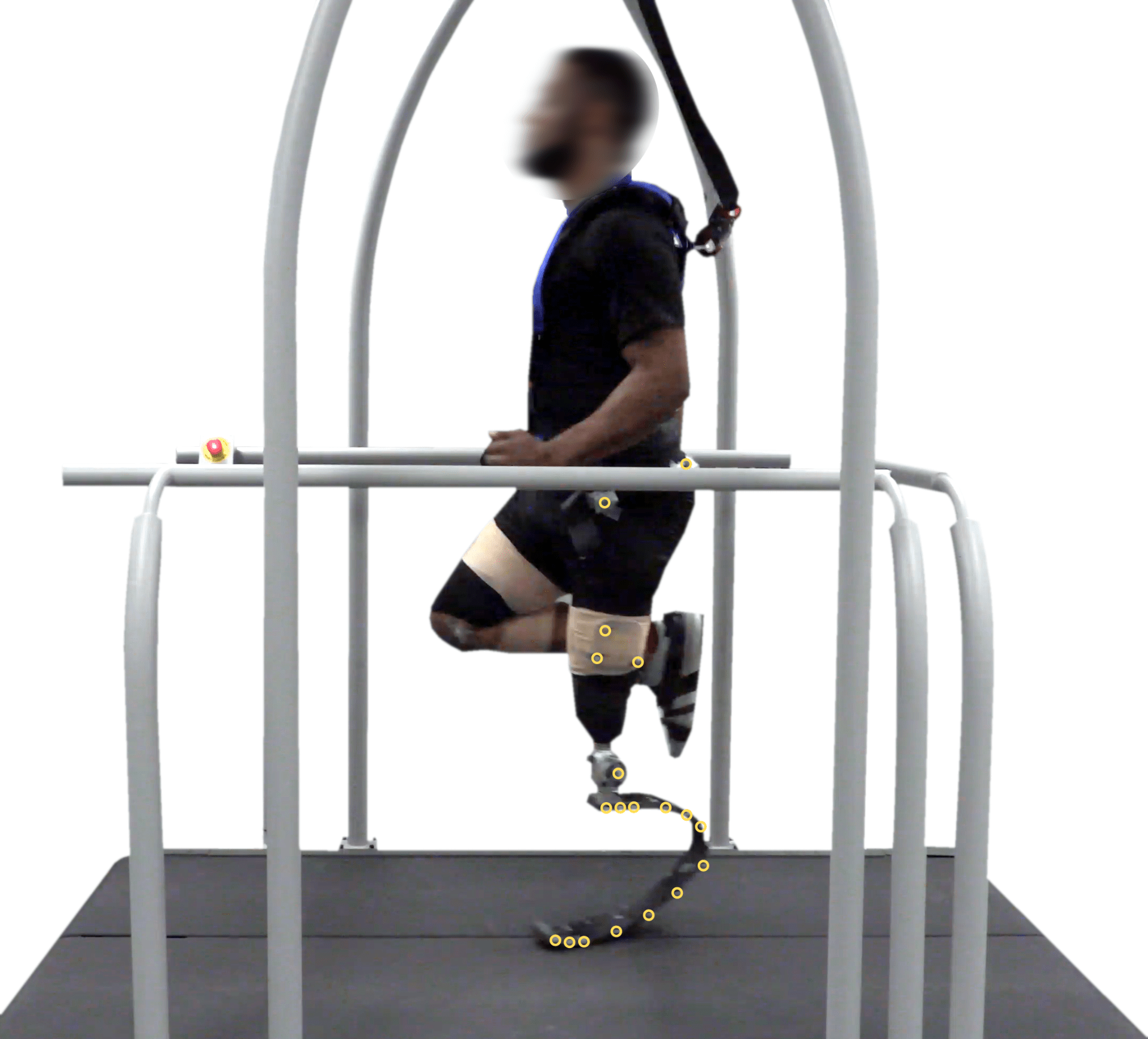Ongoing Work
Cable-drive Exoskeleton Actuator with Non-Linear Series Elasticity
Lab members: Divyansh Gupta; Haonan Fan, PhD
Unidirectional cable-drive actuators are great for transmitting high forces with minimal back-driving resistance, but they struggle with precise force control at low levels due to rotor inertia and non-linear dynamics of actuators like stiction and backlash. This project introduces a smarter actuator with non-linear series elasticity, starting with a soft spring for sensitivity at low forces, then stiffening for higher output, and finally disengaging for a traditional cable-drive feel at large forces. A CAM-based design allows for adjustable stiffness, making force control both precise and versatile for various applications.



Powered Ankle Prosthesis with a Differential Elastic Actuator and Novel Spring Geometry
Lab members: Nathan Carmichael. Collaborators: Rifat Sipahi, PhD
Powered prosthesis research cannot be conducted without a robust platform for experimentation. Series elastic actuators have been proven safe, stable, and effective for human in the loop systems such as prostheses. To combat peak torques and packaging constraints, we have developed a new type of elastic actuator using a harmonic differential and novel spring geometry. The NEUankle will be capable of reaching biological torques at biological speeds while maintaining excellent torque control and emulating passive behavior. After development and validation, it may be used for user preference studies, machine learning based classification research, or running trials.

Metabolic Cost and User Preference in Hip Exoskeleton Torque Optimization
Lab members: Fatima Mumtaza Tourk
This project focuses on optimizing exoskeleton torque profiles to minimize metabolic cost and maximize user preference. The torque profiles feature adjustable magnitude and timing parameters for the flexion and extension peaks, which are optimized separately for each metric. The goal is to compare these optimized profiles and evaluate their efficacy in the metric they were not designed for. To facilitate this experiment, we present a custom-built, fully 3D-printed hip exoskeleton that is lightweight and capable of applying sufficient torque to reduce metabolic cost, with all electronics onboard. It provides active assistance in the flexion-extension direction while allowing passive motion in the abduction-adduction direction, supporting users with active movement while maintaining comfort and mobility.

Understanding Patient-Prosthetist Interaction in the Selection of Prosthesis Alignment and Stiffness
Lab members: Brittany Moores, MSPO, CPO
Individuals with lower limb amputations receive a prosthetic foot as part of the custom prosthesis prescription process. The current process for selecting prosthetic feet lacks personalization and is not patient-centered, instead relying heavily on the expertise of certified prosthetists and manufacturer recommendations. This proposed work seeks to improve clinical practice by developing a patient-centered approach to selecting prosthetic foot stiffness, focusing on the relationship between stiffness, alignment, and the preferences of both patients and prosthetists.
Quasi-Passive Variable Stiffness Prosthetic Ankle for User Preference Optimization
Lab members: Kathryn Lee
Individuals with lower limb amputation have been shown to have prosthesis stiffness preferences that are not formally considered during the prosthesis prescription process. User preference optimization may be implemented to incorporate these preferences during prescription. In order to facilitate this, a quasi-passive robotic ankle prosthesis capable of rapid dorsiflexion and plantarflexion stiffness adjustments was developed. A novel four-bar linkage mechanism with an additional geometric constraint enables variable stiffness while maintaining the neutral angle of the ankle, as well as eliminates backlash.


Machine Learning-Based Control of Exoskeletons
Paper. Lab members: Pavan Shetty. Collaborators: Jayston Menezes; Seungmoon Song, PhD; Aaron Young, PhD
Paper. Collaborators: Dean Molinaro; Greg Sawicki, PhD; Aaron Young, PhD
Standard techniques for controlling exoskeleton torque rely on a running list of previous stride durations, with heel strikes detected by IMUs or force sensors. However, these methods fail to account for accelerations and decelerations of gait speed, as well as natural variability in cadence. In this project, we implement online machine learning-based control of exoskeleton torque by real-time estimating gait phase from a time history of onboard sensor data.
The Footropter: A Passive Prosthetic Prescription Tool with Adjustable Forefoot and Hindfoot Stiffness
Paper. Lab members: Brittany Moores, MSPO, CPO. Collaborators: Harrison Bartlett, PhD; Brian Lawson, PhD
The Footropter, similar to the phoropter in the prescription of eyeglasses, is a prosthetic foot with variable forefoot and hindfoot stiffnesses to enable the identification of a user’s preferred stiffness. In this paper, we introduce the design and working principles, characterize the ranges of available forefoot and hindfoot stiffnesses, and demonstrate the utility of the Footropter through two preference and perception studies with two unilateral transtibial prosthesis users.

Previous Work
This section contains examples of research from Dr. Shepherd’s PhD and Postdoctoral Work. PhD work was performed at Northwestern University and the Shirley Ryan AbilityLab; Postdoc work was performed at the Georgia Institute of Technology. Collaborators are listed with each project. More projects and project information can be found in the published works listed here.
A Passively Dorsiflexing Prosthetic Ankle
Paper. Collaborators: Harrison Bartlett, PhD; Brian Lawson, PhD
When humans walk, they dorsiflex their ankle a couple degrees during swing to increase ground clearance. Typical prosthetic feet, however, do not; this can lead to an increased risk of falls due to trips and scuffs (imagine walking from a tile floor to a carpet while reading your phone–even a 5 mm increase in surface height can dramatically increase trip risk). This prototype ankle, developed by Little Room Innovations (LRI), uses a complex slider-crank action with a soft return spring to dorsiflex 5° when unloaded.
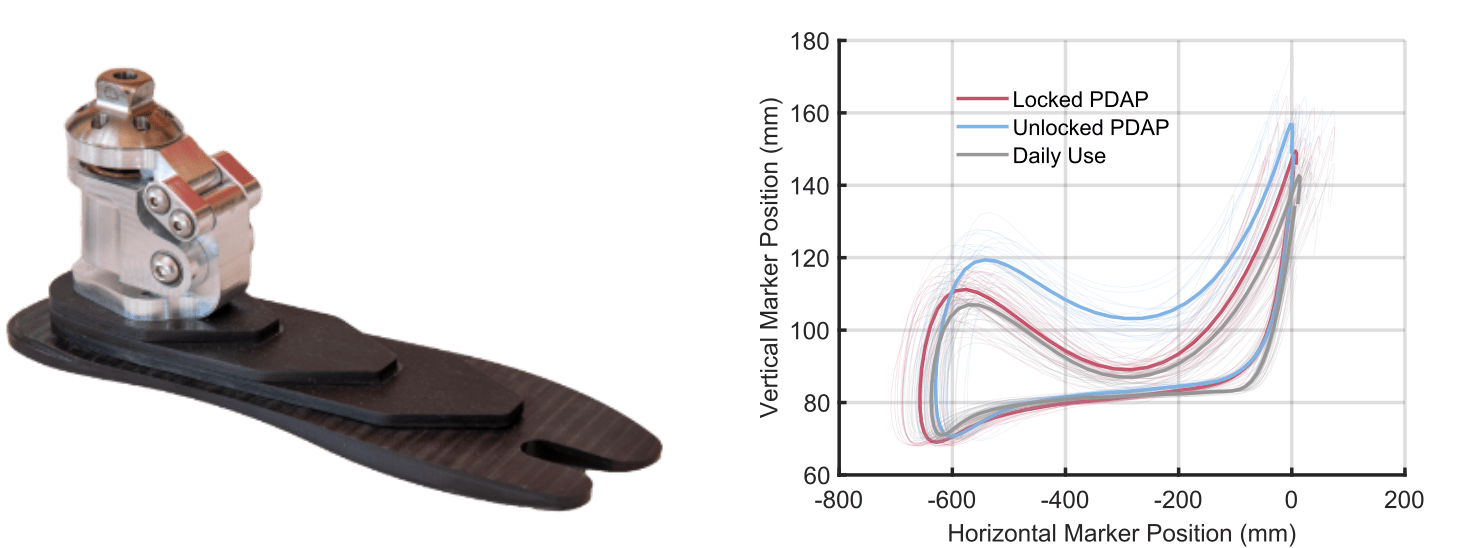
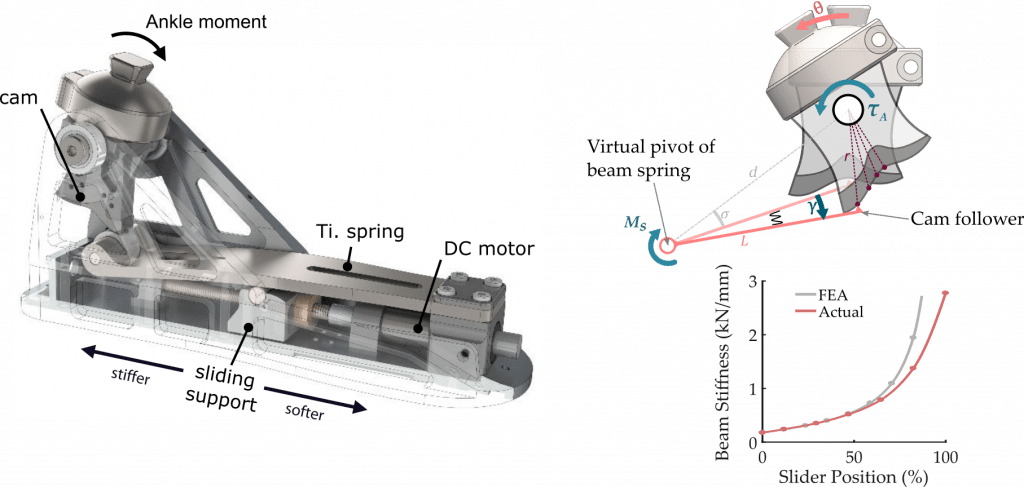
Design of a Semi-active Variable-Stiffness Prosthetic Ankle (VSPA)
Paper. Collaborators: Elliott Rouse, PhD
Prosthetic feet behave like springs, mimicking the natural function of the ankle-foot complex during walking. However, different tasks (and even different speeds of walking) are better mimicked by springs of different stiffness levels. To enable variation in stiffness across tasks while maintaining much of the light weight and high robustness of common passive devices, we developed a semi-active Variable-Stiffness Prosthetic Ankle. It uses a cantilever spring with a sliding simple support, repositionable by a small DC motor and lead screw. A cam-based transmission also allows for customizable nonlinearity in the Torque-Angle responses, allowing us to better mimic the nonlinear, stiffening behavior of the ankle during gait.
Clinician Preference of Prosthetic Ankle Stiffness
Paper. Collaborators: Elliott Rouse, PhD
In this study, we used a robotic prosthetic ankle and a psychophysics paradigm to simultaneously measure the preferred mechanical behavior (stiffness) of the prosthesis for both amputee patients and prosthetists.
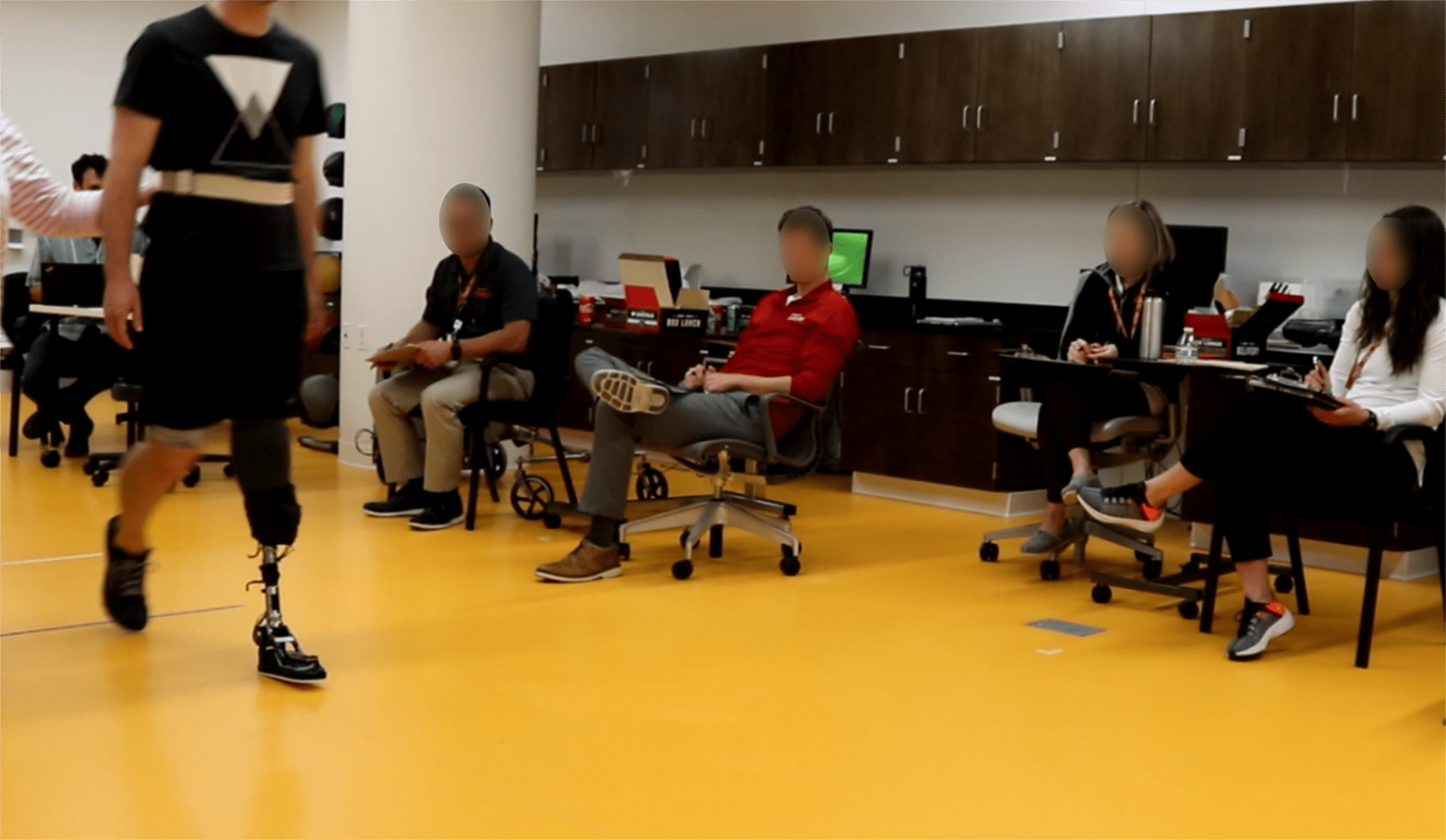
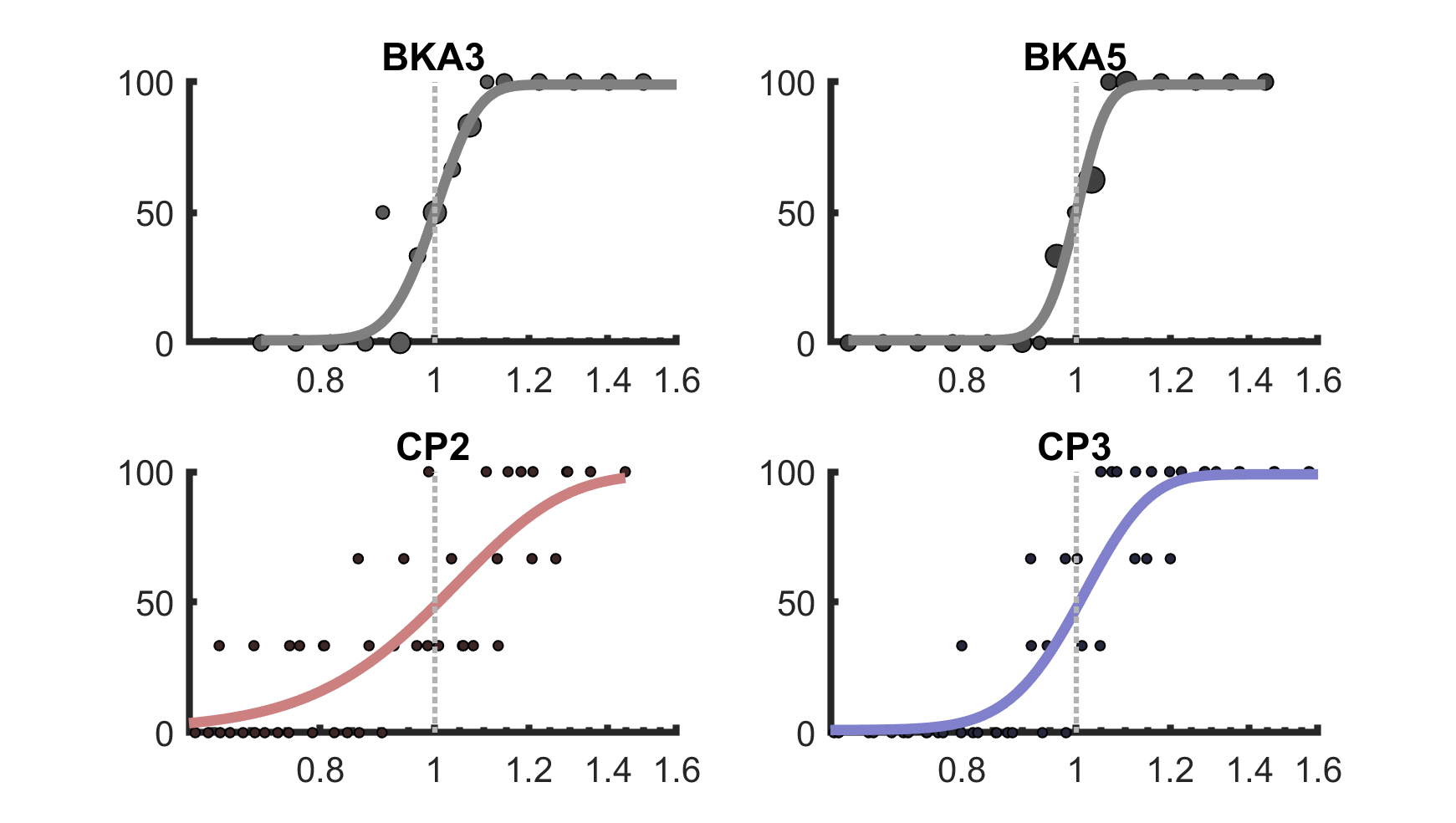
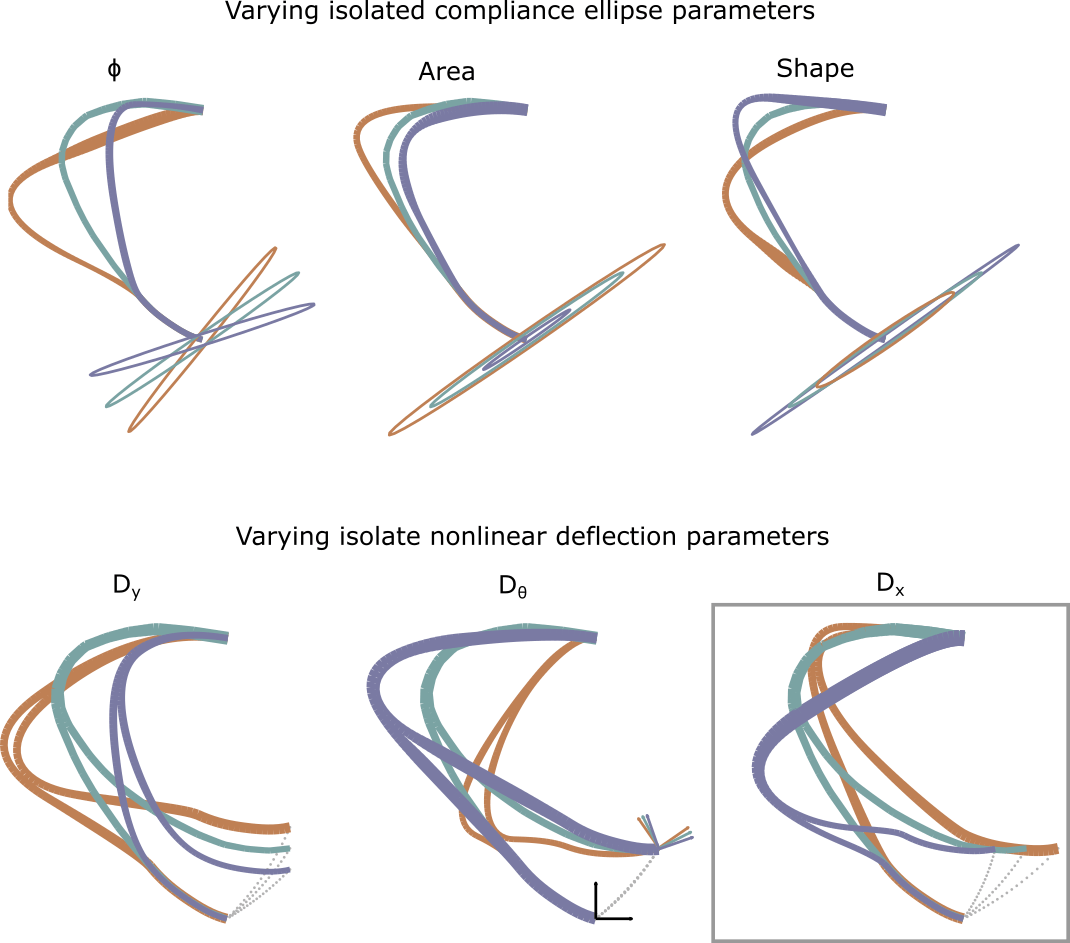
Shape Optimization of Running-Specific Prostheses
Paper. Collaborators: Daniel Gunz; Tyler Clites, PhD; Christophe Lecomte, PhD; Elliott Rouse, PhD
In this work, in collaboration with Ossur (Icelandic prosthetics manufacturer), we developed an optimization framework for discovering the shape of a running-specific prosthetic foot from a desired mechanical behavior. The endpoint mechanics can be described by either a set of vertical, horizontal, and angular deflections to a nominal force, or with compliance ellipses indicating the small-force deflection vector as a function of applied force direction. We manufactured custom prosthetic feet to determine the importance of the oft-neglected horizontal deflection induced by vertical ground reaction forces, and found that increasing horizontal deflection increases upstream knee moments.
